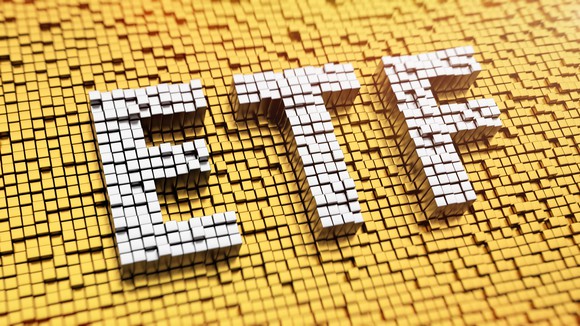
Image source: Getty Images.
Many retirees believe that once you've stopped working, you have to stop investing as well. But with life expectancies having grown over the years, you need to plan for a retirement that could last 30 years or more. That means you can't afford not to invest for growth as well as income, and that can be a challenge for conservative investors. Nevertheless, some exchange-traded funds are tailor-made to cater to those with low risk tolerance. Below, we'll look at three that fit well with retiree needs.
Focusing on dividend growth
One premier ETF that retirees can get behind is the Vanguard Dividend Appreciation ETF (VIG +0.17%). Dividend stocks have a reputation for being less vulnerable to downturns in the stock market, and their mature businesses also tend to be more resistant to recessions and other economic headwinds that can send more volatile high-growth stocks to much larger losses.
The key to the Vanguard Dividend Appreciation ETF is that the fund doesn't just focus on high-yielding dividend stocks. It also takes into consideration the quality of the dividends that each stock pays, and it seeks out companies that have a demonstrated track record of boosting their dividend payments over time. That's important for retirement investors, because it's not enough for a stock to pay healthy income right now -- it also needs to keep paying that income years and even decades into the future. With nearly 200 stocks in its portfolio and an expense ratio that will cost you just $9 per year for every $10,000 you have invested in the fund, the Vanguard Dividend Appreciation ETF will give you the security you need along with the growth potential you want.
Looking for steady strength
Volatility is the enemy of the conservative investor, and retirees can't afford to endure the huge swings in the market. The idea behind minimum volatility ETFs is to cash in on stocks that don't move as violently, and the iShares MSCI USA Minimum Volatility Index Fund (USMV +0.09%) has done a good job of providing steady growth during its brief history.
Historically, strategies that focus on less volatile stocks have posted smaller declines during down markets than those that track the entire stock market. Since its inception in late 2011, the iShares fund has nearly doubled, outperforming the S&P 500, even though the ETF has moved with fewer bumps in the road than the broader index. The ETF has a heavy emphasis on consumer, healthcare, and financial stocks, with reasonably large exposure to technology and utility stocks as well. With the overall portfolio moving with just over two-thirds the volatility of the S&P 500, the iShares Minimum Volatility ETF has a proven track record of doing what retirees want it to do.
Keeping your balance
Just because you want to have some stocks in your retirement portfolio doesn't mean that everything you own should be a stock. Being balanced means keeping some exposure to bonds and other asset classes, and that's where the iShares Barclays TIPS Bond Fund (TIP +0.19%) can play a vital role.
The TIPS ETF invests in bonds, but they aren't just any kind of bonds. TIPS stands for Treasury Inflation-Protected Securities, which are special bonds whose face value and interest payments move upward or downward with changes in the Consumer Price Index. The idea behind TIPS is for the bond to preserve the purchasing power of the investor's initial investment, and for those who are used to seeing fixed face values erode in purchasing power over time, that new feature is extremely attractive. With interest rates at relatively low levels right now, investors shouldn't expect huge returns from the iShares TIPS Bond ETF. But if inflation spikes higher, the ETF should dramatically outperform traditional bond investments, giving you a boost in your retirement portfolio's returns.
Just because you stop working doesn't mean you should stop investing. These three ETFs will make sure that you keep your assets working as hard as they can for you, even as you enjoy the retirement you've always dreamed of having.
